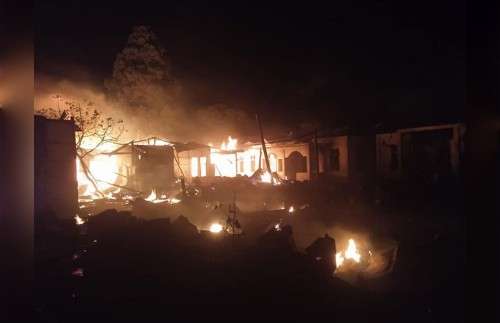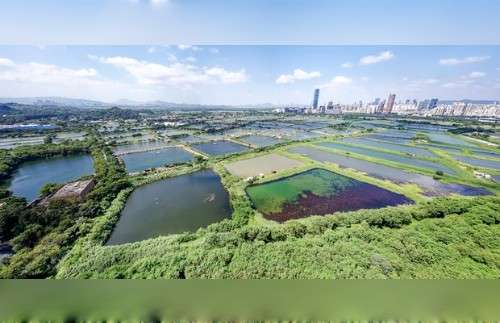In Island Park, Idaho, a fight over roadkill became a referendum on government control.
Ben Goldfarb
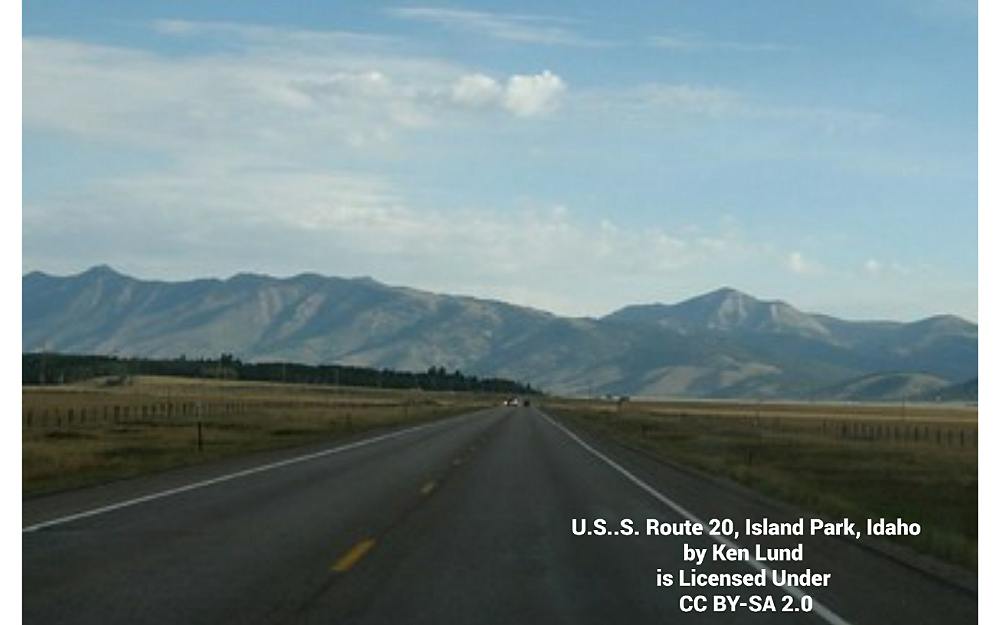
The longest main street in America begins at the southern limits of Island Park, Idaho, and ends an eyelash west of the Montana border. On a map of Fremont County, Island Park has the profile of an immense shoelace — 36.8 miles long and, in many places, just 500 feet wide. The town’s main street is its spine, the thoroughfare that connects everything with everything else: It’s how Island Park’s 270 year-round residents, along with its thousands of seasonals, get to Harriman State Park and the TroutHunter fly shop and 500 miles of snowmobile trails. It’s also a segment of America’s longest road, U.S. 20, a federal highway that meanders from Newport, Oregon, to Boston, Massachusetts. More than a million vehicles speed past Island Park each year, many conveying tourists to Yellowstone, which lies beyond the Continental Divide. Eastbound trucks tote lettuce from California; westbounders slosh with Bakken crude. To Island Park, U.S. 20 is a lifeline. To most of America, it’s a conduit.
For Idaho’s wildest inhabitants, it can also be a death trap. Elk traverse the highway as they descend from mountain redoubts to winter range on the Snake River Plain, then return on the crest of spring’s green wave. Moose cross U.S. 20 on their way to browse near the quartz folds of the St. Anthony Sand Dunes. Mule deer, grizzlies and pronghorn all ford the asphalt river, and some perish in the attempt. Between 2010 and 2014, animals caused 94 vehicle crashes along a 56-mile stretch of U.S. 20. Because most collisions go unreported, the real body count is even higher: According to state surveys, 138 ungulates died on U.S.20 and a connected 9-mile stretch of State Highway 87 in 2018 alone.
Such car-inflicted carnage is not unique to Idaho. More than a million large animals, and around 200 drivers, die annually from collisions nationwide. Over the last two decades, researchers have converged on a solution palatable to politicians on both sides of the aisle: wildlife crossings, tunnels and bridges that funnel creatures under and over highways. If roads are habitat-sundering gashes, crossings are the stitches that sew up rent landscapes. In the three years after the Wyoming Department of Transportation installed eight crossings near Pinedale in 2012, for instance, some 40,000 mule deer and 19,000 pronghorn safely navigated U.S. 191.
So when the Idaho Transportation Department began contemplating wildlife overpasses along U.S. 20 in 2016, you could forgive local conservationists for expecting the proposal to meet smooth sailing. Instead, the crossings inspired a fierce debate about the future of U.S. 20, an argument that pitted conservation’s burgeoning emphasis on large-scale habitat connectivity against the rural West’s long-standing desire to exert local control over land management. The controversy has bewildered more than one observer. “In my world, I look at wildlife crossings as a win-win situation,” Patricia Cramer, the transportation ecologist who first recommended the U.S. 20 overpasses, told me. “Never has anybody said, ‘Not in my backyard.’ Nobody says I don’t want a wildlife crossing.”
ONE BLUEBIRD MORNING in September, I chugged north on U.S. 20 in a procession of RVs, campervans and Subarus back-loaded with mountain bikes — the West’s recreational economy loose on the land. The highway slipped from sagebrush flats to lodgepole forests and back, occasionally do-si-doing with the glittering course of the Henrys Fork River. The speed limit plunged from 65 to 45 mph as the road passed through clusters of gas stations and cabinsthough the signs felt more like suggestions — everyone in a hurry to get to a trailhead or a fishing hole, anywhere besides where they already were.
North of town, the road began to climb. The land tightened, crinkling as though squeezed by a giant fist, as the highway wound out of the Island Park caldera — the vast volcanic footprint planted more than a million years earlier by the Yellowstone hotspot — and into the Henrys Lake Mountains. Whippy poles marked snowmobile trails. This tortuous 4-mile stretch was Targhee Pass, and it was the source of the trouble.
Like much of America’s aging infrastructure, the roadbed at Targhee Pass is gradually deteriorating, afflicted by icing, frost heaves and poor drainage. In the fall of 2016, under the National Environmental Policy Act, the Idaho Transportation Department and the Federal Highway Administration began studying how best to remedy the section’s problems — among them wildlife collisions, which accounted for nearly a quarter of Targhee Pass’ crashes (none of them fatal, at least for humans). Swelling tourism would only exacerbate the danger: While just 5,600 vehicles navigated the pass daily in July 2012, the agency forecast summer traffic to reach 9,400 cars a day by 2042.
“Never has anybody said, ‘Not in my backyard.’ Nobody says I don’t want a wildlife crossing.”
As traffic intensified, conservationists feared U.S. 20 could eventually truncate wildlife movement. In Idaho and elsewhere, busy highways chronically thwart mule deer and elk migrations — a threat that’s more subtle than roadkill, but, in some cases, more ruinous. “Herds can take a couple of hits on the road,” Kathy Rinaldi, Idaho conservation coordinator for the Greater Yellowstone Coalition, told me. “But if they can’t get to their winter or summer range, that’s when they start to die off.”
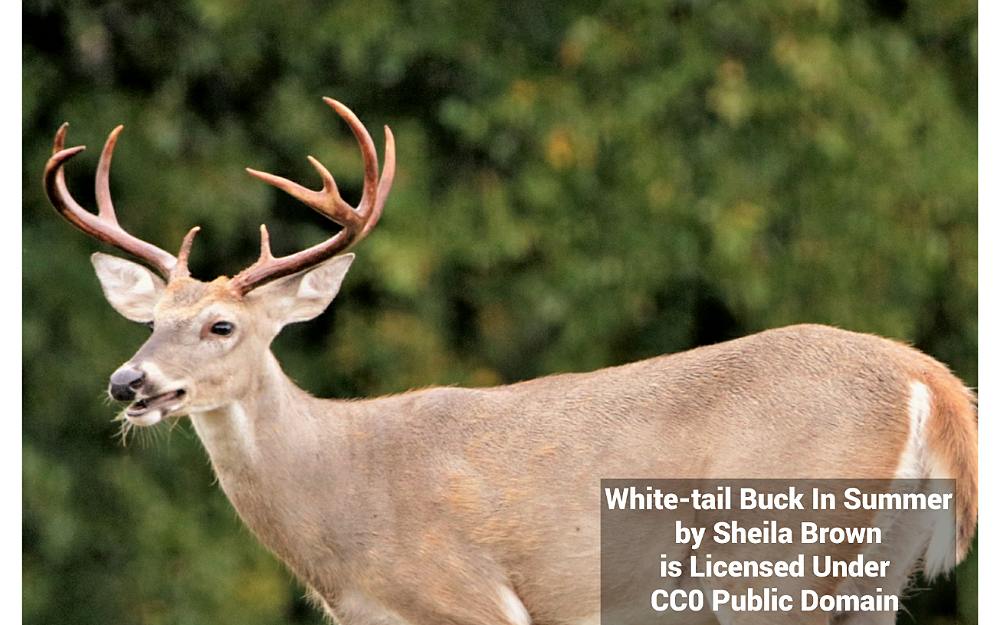
The Idaho Transportation Department had long recognized U.S. 20’s wildlife dilemma. In 2009, the agency partnered with the state’s Department of Fish and Game and the Wildlife Conservation Society to study animal movements around the highway, affixing satellite collars to 37 elk and 42 moose. Six years later, the department hired Patricia Cramer, who’d consulted on road projects in Utah, Washington, Florida and other states, to convert that research into action. Cramer pored over crash data, conferred with agency staff and environmentalists, and analyzed the movements of the collared critters. In the end, she identified a litany of fixes, including 16 potential crossings scattered along the highway’s length. Three wildlife bridges, she suggested, could span Targhee Pass.
In July 2016, the Idaho Transportation Department invited the Henrys Fork Legacy Project, a collection of agency and nonprofit representatives, to review a draft of Cramer’s report. The group liked the ecologist’s Targhee Pass recommendations, and several of its members, including Rinaldi, penned a letter urging the agency to act on them. “You look around the West, and everybody is going along this path,” Rinaldi said.
A research ecologist has estimated that each North American deer crash costs society around $6,600, elk $17,500, and moose more than $30,000.
That trend is driven by financial motives as well as ecological ones. Collisions not only kill valuable game animals, they often result in property damage and even hospital bills. Marcel Huijser, a research ecologist at the Western Transportation Institute, has estimated that each North American deer crash costs society around $6,600, elk $17,500, and moose more than $30,000. Virtually every Western state has jumped on the crossing bandwagon: There’s the $5 million Parleys Summit bridge in Utah, the $6.2 million Snoqualmie Pass arch in Washington, and the $87 million overpass that may someday assist cougars over California’s U.S. 101. A highway bill introduced in July 2019 by Sen. John Barrasso, R-Wyo., included $250 million for still more passages. As Ed Arnett, chief scientist at the nonprofit Theodore Roosevelt Conservation Partnership, put it to me: “How can you say no to saving wildlife, preventing accidents, and reducing insurance costs?”
WHEN, AT 8:30 ON A WEDNESDAY MORNING, I entered the dining room of the Lakeside Lodge, a strenuously rustic resort several miles off U.S. 20, Ken Watts was halfway through his pancakes. Watts — local gadfly, prolific newspaper columnist and bête noire of Fremont County’s conservationists — had greeted my emailed appeal for an interview with skepticism. The Island Park Preservation Coalition, or IPPC, a group he chairs whose ethos is to “keep Island Park like it is,” even held a meeting to debate my request. At last, Watts and several others agreed to speak to me. Given their partially consumed breakfasts, I wondered whether they’d arrived early for a last-minute media strategy session.
Watts, whose knee-length cargo shorts, trim white beard and amiable manner gave him the mien of a retiree on a cruise, proved as voluble in person as he’d been apprehensive over email. An improbable spokesman for a group that denounced federal overreach, Watts had worked for 34 years as an engineer at the Department of Energy’s Idaho National Laboratory, where he’d developed tests to assay other nations’ chemical weapons. In 2006, he and his wife, Patsy, began building a cabin in Island Park, and moved there full-time in 2010. Before long, he fell into politics and eventually opinion-writing, penning a column called “Ken’s Korner” in the Island Park News, a weekly paper that bills itself as “CERTIFIED Politically incorrect and 100% American.” For a time, the News’ publisher labeled him its ace reporter, depicting him in a Gay Talese-style fedora. “Every week I ask myself, ‘What should the people of Island Park know today?’ ” Watts told me. “I hope I’m provoking thought.”
The roots of Island Park’s overpass saga, Watts said, were entangled with a separate, previous drama. In 2013, the Idaho Statesman unearthed documents showing that the George W. Bush administration had explored creating a national monument in the area years earlier. Local officials, surmising that Barack Obama’s Interior Department could revive the idea, used federal funding to study the impacts of a possible protected area and discussed the matter with conservationists. Although a monument was never imminent, Watts resented what he considered an opaque process, alluding in the Island Park News to a “covert plan” to establish one. In 2014, he encouraged Fremont County’s commissioners to put the question to an advisory vote, a nonbinding election gauging popular opinion. The monument was summarily crushed.
Galvanized by victory, Watts and others formed the Island Park Preservation Coalition to stave off other unwanted impositions that could, in theory, change the community’s character. At first, the group didn’t perceive wildlife crossings as such a threat. When Kim Trotter, U.S. program director for a wildlife group called the Yellowstone-to-Yukon Conservation Initiative, touted overpasses at an IPPC meeting in September 2016, she met a cordial reception. The peace, however, would not keep.
There is something at once futuristic and anachronistic about wildlife overpasses, parabolas of green that vault over highways with a Middle Earthish grace. Yet crossings work best in concert with a less elegant technology: roadside fences, which funnel animals away from the highway and toward passages.
String some fencing through the Nevada desert, and no one complains about impaired views. At the base of Targhee Pass, though, squats a subdivision called Big Horn Hills Estates, whose residents weren’t keen to see woven-wire barriers running near their dream properties. In one op-ed, homeowners named Ralph and Connie Kincheloe vented that fencing would force them “to live like animals in a virtual prison.”
In one op-ed, homeowners named Ralph and Connie Kincheloe vented that fencing would force them “to live like animals in a virtual prison.”
By the time I met the IPPC for breakfast, the group’s anti-crossing angst had expanded to fill a thick file labeled “Grievances/Concerns”. Its members were worried about the visual impact: “The view of Island Park from the top of Targhee Pass is spectacular, and to disrupt that aesthetic beauty with overpasses and fences just seems to be counterproductive,” said Bob Stantus, a retired U.S. Air Force officer, to nods around the table. They were also concerned about the price tag: To more nods, a lawyer named Steve Emery said that Idaho’s dilapidated infrastructure had more pressing needs. (The Idaho Transportation Department estimated that building and maintaining the fences and overpasses would cost nearly $500,000 a year spread over three decades.) And, although the agency had held three public meetings and convened a working group, including Watts, to discuss the project, IPPC members were irate that consultation hadn’t begun years earlier, when the state first started studying elk and moose movements. “We felt like we weren’t being treated fairly as a community,” Watts said, to the most nods of all.
They experienced the fiercest anxiety, though, over public-land access. The transportation agency had insisted that gates in the fencing would permit hunters and snowmobilers to reach trails unimpeded, but Watts didn’t buy it. For overpasses to work, he pointed out, animals have to feel safe using them — which suggested to him that human travel would be restricted. Gates, he claimed, “would defeat the whole purpose.”
Watts’ Island Park News column gave him a powerful platform to oppose the overpasses. Beginning in early 2017, he and Leanne Yancey, another outspoken IPPC member, inveighed against the crossings weekly, predicting the structures would “desecrate” Island Park and “destroy the beauty of the natural gap God carved between the rugged mountains.” Their missives were countered by the crossings’ supporters, who defended the bridges as “the most logical and cost-effective long-range solution.”
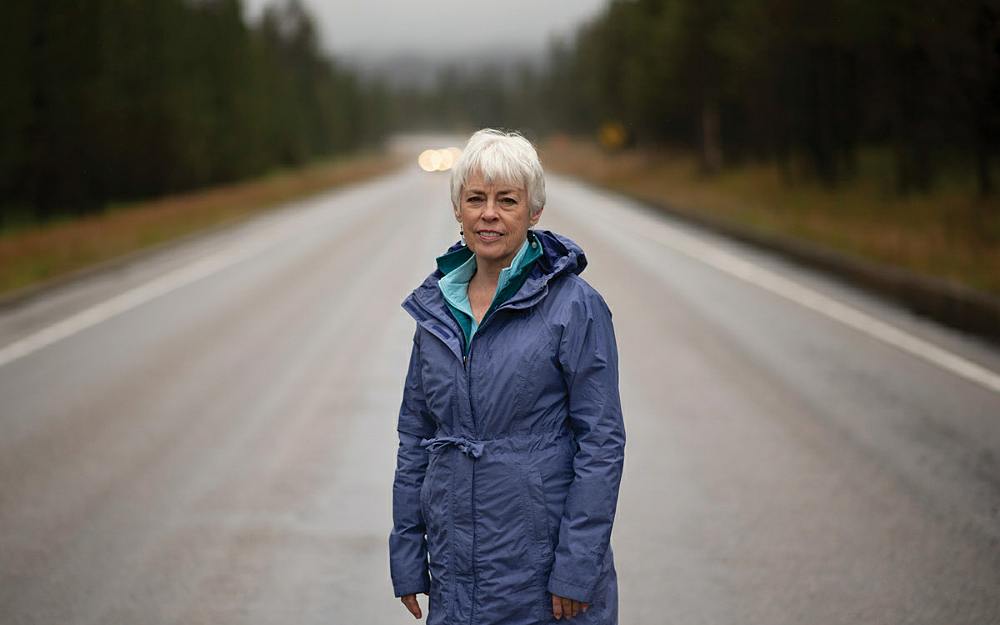
Bradly J. Boner for High Country News
The IPPC’s most vocal sparring partner was Jean Bjerke, a nature photographer who’d built a home in Island Park with her husband, Randy, in 2000. “I thought, when I retired, I would settle into a quiet life of photography and tend my garden,” Bjerke, who’d grown up organizing civil rights protests during the tumultuous 1960s, told me. Instead, Bjerke flung herself into the cause, writing op-eds and conducting social media outreach for a pro-crossing coalition called the Island Park Safe Wildlife PassageInitiative, which eventually evolved into a nonprofit called the Henrys Fork Wildlife Alliance.
Over months, Bjerke watched the invective spread from the News to Facebook to the real world. “I became appalled at the polarization of the community,” Bjerke said. Meetings turned combative; neighbors stopped speaking; employees who supported crossings were allegedly hushed by bosses. Facts themselves — annual roadkill statistics, for instance — became objects of partisan dispute. “There didn’t seem to be any middle ground, and there was a ton of misinformation,” Todd Lanning, a burly fishing guide who supported the overpasses, told me.
In “Ken’s Korner,” Watts toggled between stridency and comity, referring to his “conservation friends” and pushing to reduce the speed limit (a measure the Transportation Department dismissed as incompatible with the road’s design speed). But he also railed against the influence of environmental groups. “We cannot let 3 or 4 people from Driggs, Bozeman, Boise, Missoula, etc. determine our future,” he wrote. Among other objections, Watts took umbrage at conservationists’ input in the 2016 study that recommended the overpasses, as well as at the meetings the state held with the Henrys Fork Legacy Project before commencing public discussion about the Targhee Pass repairs. Playing devil’s advocate, I suggested that perhaps there was nothing untoward in a state agency soliciting outside expertise. “My position,” Watts rejoined, “is that the state of Idaho should never accept data from an organization that is biased and prejudiced and has an agenda.”
OFTEN, UNFOUNDED SPECULATION stoked the argument’s flames. Throughout 2017, the Island Park News reposted articles by Karen Schumacher, a blogger for right-wing sites like Redoubt News and Gem State Patriot. Schumacher, who had roots in Island Park, asserted that the overpasses were a red herring: The structures, she wrote, were insidious tools for the dispossession of private property, the vanguard of a “systematic agenda to alter where and how we live.”
Like many hyperbolic claims, Schumacher’s grew from a germ of misinterpreted truth. Beginning in the 1980s, conservationists have increasingly focused on connecting swaths of land through which animals can freely roam, habitat linkages called wildlife corridors. In 2008, the Path of the Pronghorn, a migration route through Wyoming, became the country’s first federally designated corridor, and bills that would establish a national corridor system are currently idling in the U.S. House and Senate.Schumacher perceived sinister intent in this turn toward connectivity: Corridors would “be used to justify placing Island Park into a massive, large scale, conservation area” — a scheme, she wrote in other posts, with United Nations backing. Watts shared her alarm, opining that the corridor bill was “FAR worse” than the Antiquities Act, the law presidents use to designate national monuments.
The angriest diatribes, predictably, were directed at the group promoting the largest corridor: the Yellowstone-to-Yukon Conservation Initiative, or Y2Y, which promotes habitat connectivity between Yellowstone National Park and the Canadian Yukon. In Alberta, Canada, Montana and elsewhere, Y2Y has pursued wildlife crossings without sparking controversy; in Island Park, though, its grand dream became a target. “If overpasses are built … Y2Y will then advocate the corridor is classified as a protected area,” Schumacher theorized. “The area surrounding a corridor, or buffer, will also require restricted or banned use.”
To Y2Y’s Kim Trotter, the attacks felt not only specious, but personal. I met Trotter at an outdoor cafe near her home in Driggs, Idaho — a town that lies not in Fremont County, but in comparatively liberal, Patagonia-swaddled Teton County, whose eponymous mountains loomed knife-sharp in the near distance. Trotter spoke in the deliberate cadence of a public figure who’s accustomed to having her every word scrutinized, but she’d also preserved a wry sense of humor:“I wish my kids thought I had as much power as the IPPC does,” she said. Although the overpasses’ foes tarred her as a carpetbagger, she’d spent years working for local lodges, land trusts and community foundations; her parents, she told me, are “good Fremont County Republicans” who have lived in Island Park for three decades.
“Large landscape connectivity is protecting our way of life in eastern Idaho.”
The notion that Y2Y hoped to turn eastern Idaho into a protected area, Trotter said, was a fundamental misrepresentation of its mission. Y2Y is less a discrete migration route than a conceptual umbrella under which dozens of partners plan connectivity projects, most of which entail voluntary work with private landowners through initiatives like conservation easements, wildlife-friendly fencing and bear-proof livestock management. “Large landscape connectivity is protecting our way of life in eastern Idaho,” Trotter said.
Even so, it’s not surprising that the theme of large-scale conservation played poorly in a community already wary of outside influence. In Teton County, Wyoming, where voters recently allotted $10 million for new wildlife crossings, roadkill-concerned residents had launched the initiative. By contrast, Leanne Yancey griped in the Island Park News, Island Park’s overpasses hadn’t “originated from within the community of people who really do live here.” While the U.S. 20 crossings had many local supporters as well as detractors — one resident named Bonnie Altshuld told me overpasses were “a no-brainer” — its most prominent nonprofit boosters were headquartered outside Fremont County. As more than one conservationist who’d observed the situation from afar summarized it to me: wrong message, wrong messengers.
ON AFTERNOON, I visited Fremont County’s colossal brick courthouse to speak with Lee Miller, the county commission’s chair, a timber industry veteran who, at 73, still takes an elk every autumn. Like Watts, Miller told me the state had “blindsided” Fremont County by pursuing long-term wildlife studies without formally notifying the commission. “We sent out letters, both federal and state, saying we require coordination in this county when an agency is going to do something,” he said. “When this thing very first started, we should have been at the table.”
The view that agencies are obliged to coordinate with counties is a potent one in the West. The notion stems from a provision in the Federal Land Policy and Management Act directing the Bureau of Land Management to coordinate its planning activities with states, tribes and local governments; other agencies’ laws, including the Federal Highway Administration’s, contain similar language. What that means depends on whom you ask. Although some legal scholars refute this interpretation, county commissions in Oregon, Nevada, Wyoming and other states have demanded equal footing with federal agencies in decisions ranging from grazing permit allocations to road closures. Coordination, wrote High Country News in 2015, is a legalistic approach to timeless anti-federalism, a “Sagebrush Rebellion in bureaucratic clothing.”
The West’s most dogged advocate for coordination is the American Stewards of Liberty, a Texas-based group helmed by Margaret Byfield — the daughter of Wayne Hage, a Nevada rancher who waged a lifelong battle against federal grazing restrictions. Fremont is among many counties whose representatives have attended the group’s workshops. And in early 2018, its commissioners heard a presentation from Fred Kelly Grant, the director of the Americans Coordination Institute, a group whose goal is to “restore local government to its rightful place.” Two months after Grant encouraged the county to invoke coordination, the commission demanded that state and federal agencies “pause all actions” on U.S. 20 until they’d properly consulted with the county.
The vote’s outcome wouldn’t hold legal water, but it would wield powerful influence.
On July 30, 2018, Fremont County’s commissioners took local control a step further: They elected to put overpasses to an advisory vote on that fall’s ballot, the same strategy that, four years earlier, had torpedoed a national monument. The vote’s outcome wouldn’t hold legal water, but it would wield powerful influence. In an election earlier that year, voters in North Idaho’s Bonner County had rejected a wilderness area in the Scotchman Peaks, the range that towers over Lake Pend Oreille, by a 54-46% margin. To environmentalists’ chagrin, Sen. Jim Risch, R-Idaho, deferred to popular opinion and withdrew his support for the wilderness.
Wildlife passage advocates had good reason to fear a similar outcome in Fremont County. Many of the overpasses’ staunchest defenders were registered to vote elsewhere; Jean Bjerke, for example, winters in Cedar City, Utah. Such migrants might contribute substantially to Island Park’s tax base and love the town deeply — but, from the ballot’s standpoint, they were invisible. Pro-crossing seasonals wrote the Island Park News to bemoan their disenfranchisement; in “Ken’s Korner,” Watts countered that foes of the vote wanted to silence legitimate locals. The IPPC mounted a campaign that impressed even its adversaries, garnering endorsements from every county elected official, the Chamber of Commerce, and the district’s representatives in the state House and Senate. Although Bjerke and her allies rallied their own troops, by the time Nov. 6, 2018, arrived, they knew it was over. The results were definitive: 78% of the electorate had rejected overpasses.
THE VOTE MAY HAVE BEEN LEGALLY MOOT,but it proved politically decisive. When, two months later, the Idaho Transportation Department released its environmental assessment for the Targhee Pass repairs, it spurned overpasses in favor of a cheaper solution called an Animal Detection System, or ADS — an array of radar stations that would activate flashing warning signs whenever a creature rambled onto the road. With money tight, the agency reasoned, funding should go first toward road stretches with higher documented collision rates than Targhee Pass. It also observed that the largest wildlife migrations happen during lightly trafficked shoulder seasons, diminishing the need for crossings.
But it acknowledged that politics had played a role, too. “Local elected officials have communicated that they do not support wildlife crossings and fencing,” the assessment stated. (Megan Stark, a spokesperson for the Transportation Department, told me in an email that, while the agency had indeed considered input from public officials, the advisory vote “did not have an impact on our decision.”)
Lee Miller, the Fremont commission chair, told me the Transportation Department made the “right decision.” Scientists are less confident. While crossings and fences reliably cut roadkill by more than 80%, detection systems are a riskier bet. Some certainly succeed: In Switzerland, for instance, an ADS slashed collisions by 82%. In Idaho, though, such systems have fallen victim to their own complexity. In 2013, the state’s Transportation Department installed an ADS on U.S. 95 near Bonners Ferry. Although the system proved reliable, Brice Sloan, the contractor who designed it, told me the state didn’t seem to have the “interest or ability” to maintain it. Five years later, Sloan bought his creation back. Today, it sits in his Boise office.
Since then, Sloan said, animal detection technology has improved: Machine-learning, for instance, has made software better at distinguishing an elk from an SUV. Stark concurred, telling me that ineffective designs had been “largely abandoned,” and that the state to install “a state-of-the-art system.” Even so, the Western Transportation Institute’s Marcel Huijser told me that detection systems are still considered “experimental,” and that they remain plagued with technological, maintenance and management problems. “Almost none are in place for more than a few years,” Huijser said. “If the main objective is to solve a practical problem, then an Animal Detection System has a super-high risk of failure.”
“When the traffic is high, the elk just come to the road, turn around and leave.”
And while Animal Detection Systems may reduce roadkill, they don’t make crossing the highway any more appealing to wildlife. Norris Dodd, a road ecologist who designed an ADS on Arizona’s State Route 260, found that, while the warning lights reduced motorist speed as intended, animals often judged the road a barrier anyway. The system “doesn’t address connectivity,” Dodd told me. “When the traffic is high, the elk just come to the road, turn around and leave.” Some try again late at night; others may never reach the habitat they set out for. Wildlife crossings and fencing, by contrast, physically separate animals from the road, permitting them to move without waiting for a traffic break.
The advantages of overpasses would not have surprised the Idaho Transportation Department. In late 2018, the Greater Yellowstone Coalition filed a records request that turned up a draft report authored by Renee Seidler, a transportation specialist at the Idaho Department of Fish and Game. Seidler had calculated that fencing and overpasses at at Targhee Pass would prevent enough accidents to effectively pay for themselves in as few as 20 years. (When the final report was published, it didn’t contain Seidler’s calculations, which, according to Stark, weren’t consistent with the Transportation Department’s own methods for tabulating costs.) Fish and Game, Seidler concluded, “recommends three wildlife crossing overpasses with wildlife fencing … for the length of the project area.”
The report proved yet another Rorschach test. For Watts, Seidler’s background — she’d published studies on the effectiveness of crossing structures while working for the Wildlife Conservation Society — constituted further evidence that environmental interests had infiltrated Idaho’s agencies. To the Greater Yellowstone Coalition’s Kathy Rinaldi, the report demonstrated that the state had prioritized politics over science.
“I think it was easy for them to be like, wow, this thing just got really controversial and hot,” she told me, “and we don’t want to deal.”
TODAY, AN ANIMAL DETECTION SYSTEM at Targhee Pass, rather than overpasses, seems a fait accompli. Stark told me that the Idaho Transportation Department expects to issue its final decision in spring 2020, but won’t break ground on the Targhee Pass repairs, which include widening the road and fixing its drainage, until 2026. Meanwhile, Y2Y and its partners have largely moved on. “Honestly, since the advisory vote, we’ve said, ‘Let’s go work in places across the state where there is energy for good conservation work,’ ” Kim Trotter told me in Driggs. For his part, Lee Miller said the ordeal had strengthened Fremont County’s relationship with both the transportation department and federal agencies like the Forest Service. “Because of what happened, we have better coordination with all of them,” he said.
Yet the tensions the fight provoked seem destined to linger. Gaining the ability to govern public lands locally is among the rural West’s longest-held causes, the impetus for countless scuffles over federal forest plans and monument declarations and grazing restrictions. Reconnecting the Northern Rockies’ fragmented habitats, meanwhile, is a vast regional problem that, by definition, requires high-level oversight. Biology dictates that our conservation efforts must broaden, even as our politics become more parochial.
Biology dictates that our conservation efforts must broaden, even as our politics become more parochial.
For all that U.S. 20 means to Island Park, though, it’s also a federal highway trafficked by more than a million travelers a year and maintained with federal funding. Should a town with fewer than 300 year-round residents, or even a county with 13,000, shape a vital national artery? What is U.S. 20, anyway — Island Park’s main street, or the country’s longest federal highway? Can it be both?
The balance, for now, seems tipped toward main street. In early 2019, the Idaho Republican Party resolved to oppose all overpasses in Fremont County, claiming the structures would restrict
public-land access and funnel animals toward “kill zones” for predators (a fear that’s belied by studies in Canada’s Banff National Park). The state’s House of Representatives followed suit, formally urging the U.S. Congress to “ensure that stakeholders are quickly and fully informed whenever wildlife crossing infrastructure is proposed.”
And the issue remains radioactive. In June 2019, Ed Schriever, director of the Idaho Department of Fish and Game, nixed a wildlife migration lecture series scheduled for Island Park and neighboring towns, according to an email I received through a public records request. “Stand down on additional conversations on wildlife movement, corridors, and safe passage in eastern Idaho, regardless of invite or desire,” Schriever directed staff. In an email, Schriever told me he canceled the talks to make sure his agency’s outreach was “constructive to the US 20 process” and “recognized the local community’s advisory vote.”
Elsewhere in Idaho, though, crossings have surged forward. In February 2019, the Boise City Council greenlit the state’s first overpass, a $3.2 million bridge over Highway 21. On U.S. 30, the state intends to construct a $5.5 million crossing at a chronic mule deer collision site, a project that has the approval of Bear Lake County’s commissioners. And Island Park’s conservationists haven’t given up: In 2018, homeowners in a subdivision called Pinehaven urged the transportation department to consider crossings along other stretches of U.S. 20, including a roadkill hotspot called Ashton Hill, as it continues repairs. Several IPPC members told me they might have supported an underpass there before the fracas began; now, though, Watts said that any crossing proposal could trigger an advisory vote.
For now, roadkill on U.S. 20 continues apace, the inevitable byproduct of our accelerated lifestyles and wildlife’s compulsion to roam. On Aug. 24, 2019, a week before my visit, a truck towing a camper met a black bear as the creature darted across the highway at Ashton Hill, clipping the ursid and dragging it for some distance. The collision left fur snagged on the camper’s stairs and the bear spread-eagled in the road. “No one in the truck was injured,” wrote the Rexburg Standard-Journal, “and the family expressed sorrow that the bear had been killed.”
Ben Goldfarb is a frequent High Country News contributor and the author of Eager: The Surprising, Secret Life of Beavers and Why They Matter. He is a 2019 Alicia Patterson Foundation fellow covering the impacts of roads on wildlife.
This Story was originally published by High Country News (hcn.org) on January 1 ,2020
Myanmar Junta Attack on Hospital Kills 4, Many Injured
To Tackle Militant Attacks,Nigeria Considers Introduction of State Police Across the Country
2 Decades on, Families of Tak Bai Incident Victims Seek Justice
On US University Campuses, Pro-Palestinian Protests Spread
Hong Kong’s Tech City Will Destroy Key Wetland for Birds: Experts
Due to China Connections,Popular Indian Payment System Faces Restrictions
Tensions High in Bangladesh District After Muslims Killed Over Hindu Temple Fire
As Boat Tragedy Shows Dangers of Crossing, UN Criticizes Britain’s Rwanda Migrant Law
Subscribe Our You Tube Channel
Fighting Fake News
Fighting Lies





